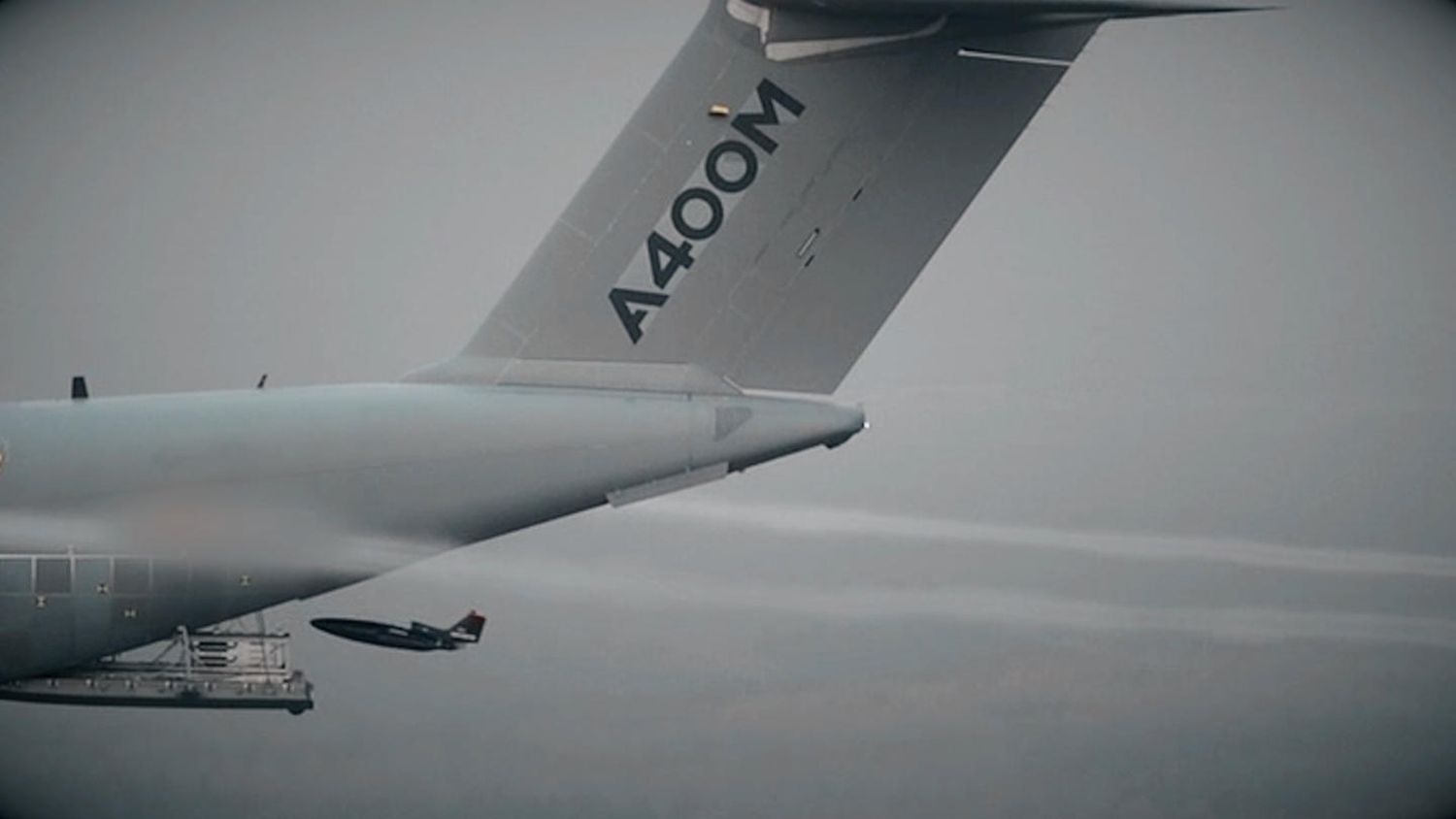As a key part of the Future Combat Air System (FCAS), the A400M demonstrated its drone launch capability from its cargo hold.
Airbus Defence & Space conducted a successful test flight in which an A400M deployed a drone from its cargo ramp, validating its ability to launch drones from the air.
In the future, these unmanned aircraft, called Remote Carriers, will be able to serve as force multipliers for various missions, keeping pilots out of harm’s way. The combination of manned and unmanned aircraft (MUM-T) will allow Remote Carriers to operate in tandem with manned aircraft, opening up new tactical fields to surprise, deceive, deter, saturate and attack adversaries.
During the A400M flight test, an Airbus-built Do-DT25 drone, acting as a surrogate remote carrier, was launched over a test range in northern Germany.
Shortly after launch, the drone’s parachute opened, bringing it safely to the ground. Throughout the test, the drone was connected and transmitting data to the A400M «mother aircraft». This data transfer illustrates how remote carriers can connect to a cloud-based combat network, providing vital information by serving as «eyes and ears» over the battlefield, while allowing manned aircraft operators to task them during their missions.
? Airbus has launched a drone from a flying #A400M for the first time ?.
Demonstrating this feasibility is a key step towards the Future Combat Air System #FCAS.
Read the full story:https://t.co/uP1n0mWkpn pic.twitter.com/BiLpmc2FRF— Airbus Defence (@AirbusDefence) February 21, 2022
Remote Carriers
These works are part of the NGWS/FCAS project, the European Future Combat Air System. This project has several development pillars, whose execution responsibility is distributed among the different associated companies. One of those pillars, for which Airbus Germany is primarily responsible, is that of the Remote Carrier.
Remote Carrier is a remotely controlled unmanned system, launchable from the A400M, which will accompany and support the manned aircraft, much like the Loyal Wingman concept.
The future European 6th generation aircraft (the program partners are Germany, Spain and France) will perform their missions together with the Remote Carrier, linked and operating in an integrated manner within a «combat cloud».

As its name suggests, the Remote Carrier will be an unmanned aircraft, designed to carry different payloads like sensors, jamming systems or weapons, providing great operational flexibility and functioning as a force multiplier for the next generation European manned combat aircraft.
Increasing experience in manned-unmanned teaming (MUM-T)
The A400M air-launch demonstration involved a joint flight test crew from the German Air Force and Airbus. The new Modular Airborne Combat Cloud Services (MACCS), also an Airbus product, enabled full connectivity between the airlifter and the drone.
Airbus will continue the validation of the A400M as an airdrop platform for Remote Carriers, anticipating the possibility of deploying a large number of these drones on each mission. The large cargo compartment of the multipurpose aircraft is expected to be able to accommodate 40 or more Remote Carriers.
The A400M’s ability to bring Remote Carriers closer to the combat zone will allow the deployment of a large number of flight platforms, enabling the FCAS to perform multiple combat missions, even in well-protected environments. The next flight test is scheduled for later this year.
In addition, during the Timber Express 2021 exercise a Eurofighter networked with two Do-DT25 drones and tasked in real time, became the first successful application of MUM-T with operational military aircraft in Europe.
Earlier, Airbus also demonstrated the control of five Do-DT25 drones by a mission group commander who was airborne in a manned command and control aircraft. The validation of elements such as connectivity, human-machine interface and the concept of team intelligence through mission group management are also key steps towards the use of Remote Carriers and the Combat Cloud, fundamental pillars of the European Future Combat Air System.



Comentarios
Para comentar, debés estar registrado
Por favor, iniciá sesión